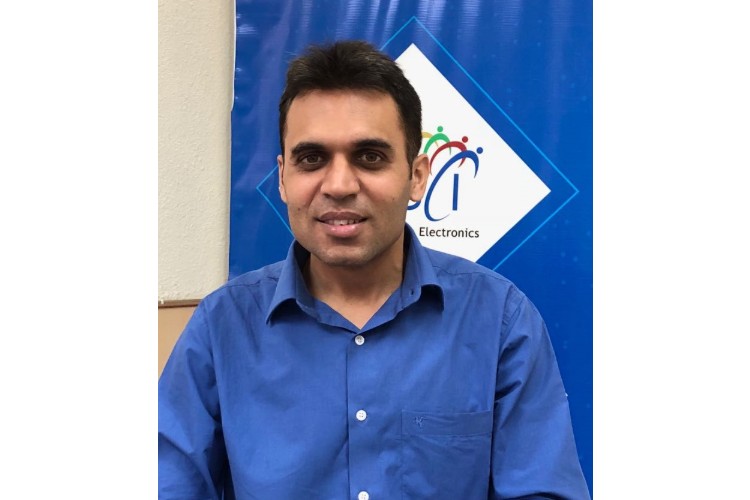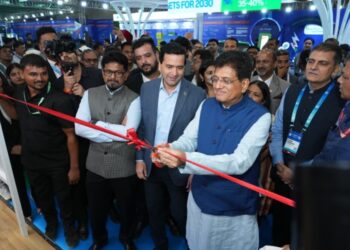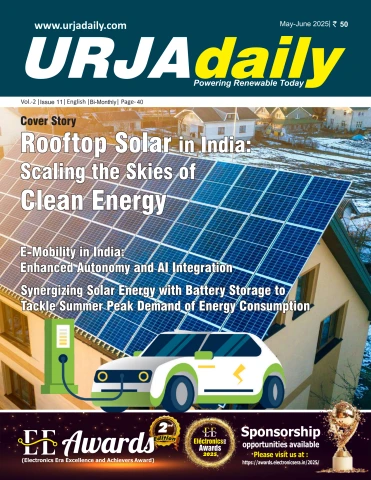When we talk about progress in India, we often think of metro railways, highways, skyscrapers, or digital connectivity. But there’s another, quieter revolution happening high above our heads and deep beneath the ground—one carried by the steel towers and thick cables of electricity transmission infrastructure. Those high-voltage lines snaking through hills, farmlands, and bustling cities are not just part of the landscape—they are the unsung arteries of development, carrying power from generation plants to every corner of the nation. They are, in essence, the very lines that are Powering the Future and contributing to Nation Building by lighting up and electrifying the country.
From powering pumps in Punjab’s fields to energizing textile machines in Surat, this invisible grid forms the very backbone of India’s agricultural, industrial, and rural transformation. They carry not just electricity, but also hope, opportunity, and development—especially for our farmers, rural families, and small industries.Think of it like a high-speed expressway for electricity, connecting generation hubs to demand centres across the nation. Without these “invisible lifelines,” power generated in Himachal’s hydro plants or Gujarat’s solar parks would never reach the fields of Haryana or the textile mills of Tamil Nadu. This robust network is crucial for electrifying the nation’s diverse landscape, ensuring that every region can participate in India’s growth story.
Powering Agriculture: India’s Green Backbone
For India’s 50% population dependent on agriculture, power (electricity) is as essential as water and seed. The green revolution may have introduced high-yield crops, but its modern successor is the silent revolution of reliable electricity supply. In regions like Punjab and Haryana, where the transmission network is robust, electricity runs deep into the rural heartland, energizing tube wells, cold storages, and food-processing units. This has not only boosted crop productivity but also reduced post-harvest losses.
Consider Madhya Pradesh: here, extended transmission lines now bring consistent electricity to areas that once depended solely on erratic rainfall. Farmers can now irrigate fields round-the-clock, even during dry spells, resulting in improved yields and financial stability. Moreover, reliable power has allowed cold storage units to operate efficiently, helping farmers store perishables longer and sell their produce at more favorable prices, rather than making distress sales. What’s often overlooked is how power availability determines market participation. In areas where electricity supports food processing and preservation, farmers move up the value chain—becoming agri-entrepreneurs, not just cultivators. This direct impact on rural livelihoods showcases how transmission lines are truly lighting up opportunities for our agricultural backbone.
Supporting Industry: Electrifying the Economy
India’s industrial ecosystem thrives on one key element: uninterrupted electricity. Transmission infrastructure, though invisible to many, is what ensures that factories, workshops, and IT parks keep buzzing with activity. The Delhi-Mumbai Industrial Corridor (DMIC), a megaproject aimed at creating smart cities and manufacturing zones, would simply not be possible without the dense web of power lines connecting plants to consumers. This grid is fundamental to India’s journey of Nation Building, providing the consistent energy required for industrial expansion.
In Gujarat’s Surat, where diamond polishing and textile weaving are daily lifelines, upgraded transmission lines have helped factories run without fear of power cuts. That stability has allowed small and medium enterprises to scale up, accept global orders, and create thousands of jobs. Similarly, the rise of IT parks in Bengaluru and Pune owes much to robust energy transmission that supports 24×7 digital operations. Transmission strength is also a key factor in attracting industrial investment. Investors assess not just location and logistics but also infrastructure reliability. Many new hubs in Maharashtra and Karnataka have sprung up where grid connectivity is strong, proving that electricity access is no longer just a rural development issue—it’s a key economic driver, powering India’s economic engine.
Transforming Rural Life: Lighting Up Lives and Empowering E-commerce
A few decades ago, the image of rural India after sundown was one of darkness and oil lamps. Today, thanks to ambitious electrification schemes and the expansion of transmission networks, most Indian villages are lit up. But electricity has done more than light homes—it has transformed rural life.
Children now study under tube lights, not kerosene fumes. Health centers can store life-saving vaccines, and small kirana shops run fans, freezers, and even PoS systems. In many villages, young entrepreneurs have opened cyber cafés, mobile repair shops, flour mills, or tailoring units—all powered by the grid. This has created local employment and reduced migration to cities, directly contributing to Nation Building at the grassroots level.
Interestingly, electricity is also an agent of gender equity. With better lighting and access to appliances, women can run home-based businesses, participate in self-help groups, and learn new skills online. In states like Chhattisgarh and Odisha, electrification has boosted participation of women in local economies, turning homes into hubs of economic activity.
A remarkable recent development, fueled by this electrification, is the growth of e-commerce in rural villages. Not long ago, establishing and managing warehouses in remote areas was a significant hurdle due to the lack of reliable electricity and communication infrastructure. However, with consistent access to power, these challenges are steadily being overcome. Rural youth, equipped with smartphones and supported by a stable power supply, are now actively participating in the digital economy. From setting up small collection points for online retailers to managing last-mile delivery services, electricity has enabled a new wave of entrepreneurship. This has not only generated reliable income for countless young individuals but has also connected isolated communities to national and global markets, demonstrating how electrifying the country is truly lighting up new economic pathways.
Road Ahead: Challenges and Opportunities
While the progress is impressive, challenges remain. Transmission infrastructure requires heavy investment and skilled manpower. Land acquisition hurdles, environmental concerns, and maintenance issues—especially during storms or floods—can delay projects and cause disruptions.
Moreover, as India’s energy appetite grows—driven by EVs, AI data centers, and industrial automation—the transmission network must scale in both capacity and efficiency. The government’s ambitious target to expand the network from 485,000 circuit kilometers in 2024 to 648,000 by 2032 includes deploying cutting-edge technology like High Voltage Direct Current (HVDC) lines that can transmit more power over longer distances with minimal losses.
Crucially, the benefits of transmission expansion must reach underserved and remote regions. In places like the Northeast, parts of central India, and the Himalayan belt, equitable access to electricity can unlock immense untapped potential. Whether it’s promoting eco-tourism, small hydropower units, or bamboo-based industries, reliable power can catalyze grassroots development. This continued expansion is vital for completing the mission of electrifying every corner of India, a cornerstone of our Nation Building efforts.
Conclusion: The Invisible Power of Progress
India’s growth story is often told through gleaming expressways and glittering IT campuses. But equally important is the network of cables, towers, and substations that carry the current of change. Transmission infrastructure may not make headlines, but it enables everything—from a farmer irrigating his field at dawn, to a coder uploading her work at midnight, and a rural entrepreneur processing an online order. It is the silent, yet undeniable force that is Powering the Future and relentlessly contributing to Nation Building by lighting up and electrifying the country, one connection at a time.
Transmission infrastructure is not just about concrete and cables—it’s about connecting opportunities, empowering farmers, lighting up industries, and truly building a brighter future for all of India.












